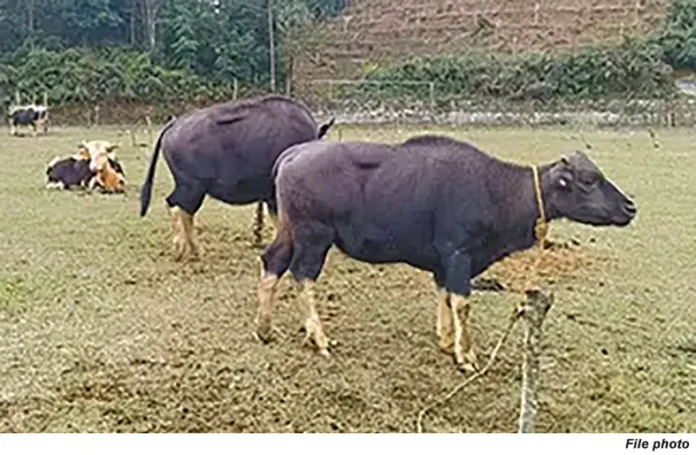ITANAGAR, 28 Nov: The Jomlo Mongku Mithun Farmer Federation (JMMFF) has expressed grave concern over the reported decline of the mithun population in Arunachal Pradesh at an alarming rate and urged the authorities concerned to regulate the slaughtering of the animal during elections and festivals.
The federation stated that mithun, the state animal, is not only a symbol of pride, wealth, and status but also a living embodiment of the cultural identity and age-old traditions.
“For generations, mithun has played a central role in our social customs, rituals, and community relationships, often being used to solemnise marriages, settle disputes, and mark important life events. In recent years, however, there has been a disturbing rise in large-scale and often unregulated mithun slaughter, especially during elections, festivals, feasts, and community celebrations,” JMMFF chairman Tadang Tamut said in a press release.
He expressed apprehension that the trend, if unchecked, would severely deplete the existing stock and threaten the survival of this heritage species in the state.
Tamut stated that field observations and discussions among farmers, elders, and youths alike indicate that the mithun population in several regions has declined drastically, with many villages reporting less than half of their traditional herd strength.
“Such decline is not just a loss of livestock, but a blow to the cultural fabric and economic security of mithun-rearing communities,” he said.
Tamut stated: “At a time when climate change, shrinking grazing areas, predation, and diseases already pose serious challenges, indiscriminate slaughter for short-term gain is further pushing the species towards a crisis.”
“It is acknowledged that feasting, gift-giving, and animal sacrifices are part of our customs. Celebration is our tradition and a source of community bonding. Yet, preservation is also our tradition, as our ancestors reared mithun carefully, protecting breeding stock and allowing herds to regenerate,” he said.
The JMMFF chairman further stated that the balance between celebration and conservation, once maintained by customary norms, is now under strain due to increased political feasting, competitive display of wealth, and the absence of clear, community-backed limits on slaughter.
He appealed to community-based organisations, village councils, and student unions to frame local guidelines on the maximum number of mithun that can be slaughtered during any single event or election campaign. He also urged the political parties and candidates to voluntarily adopt a “responsible feasting pledge” by avoiding mass mithun slaughter for campaign and exploring alternative ways of hospitality.
Further, he appealed to government departments and policymakers to initiate consultations for a regulatory framework that respects customary practices while discouraging excessive and commercialised slaughter, particularly in peak election and festival seasons.
Donyi-Polo faith leaders, churches and temples, as well as elders and youth groups have also been urged to use their influence to promote the message that true prestige today lies in protecting mithun, not in killing more of them.
Besides regulating slaughter, he said, there is an urgent need for a broader mithun conservation strategy.
“This should include support for scientific breeding programmes, community-managed grazing reserves, better veterinary care, predator management, and access to financial schemes that make mithun rearing a viable and sustainable livelihood for rural youths.”
“By treating mithun as a long-term economic asset rather than a one-time feast commodity, the state can generate employment, strengthen tribal economies, and reinforce cultural pride,” he said, adding that if timely action is not taken, Arunachal risks losing not only an important species but a unique cultural institution that has bound communities together for centuries.




